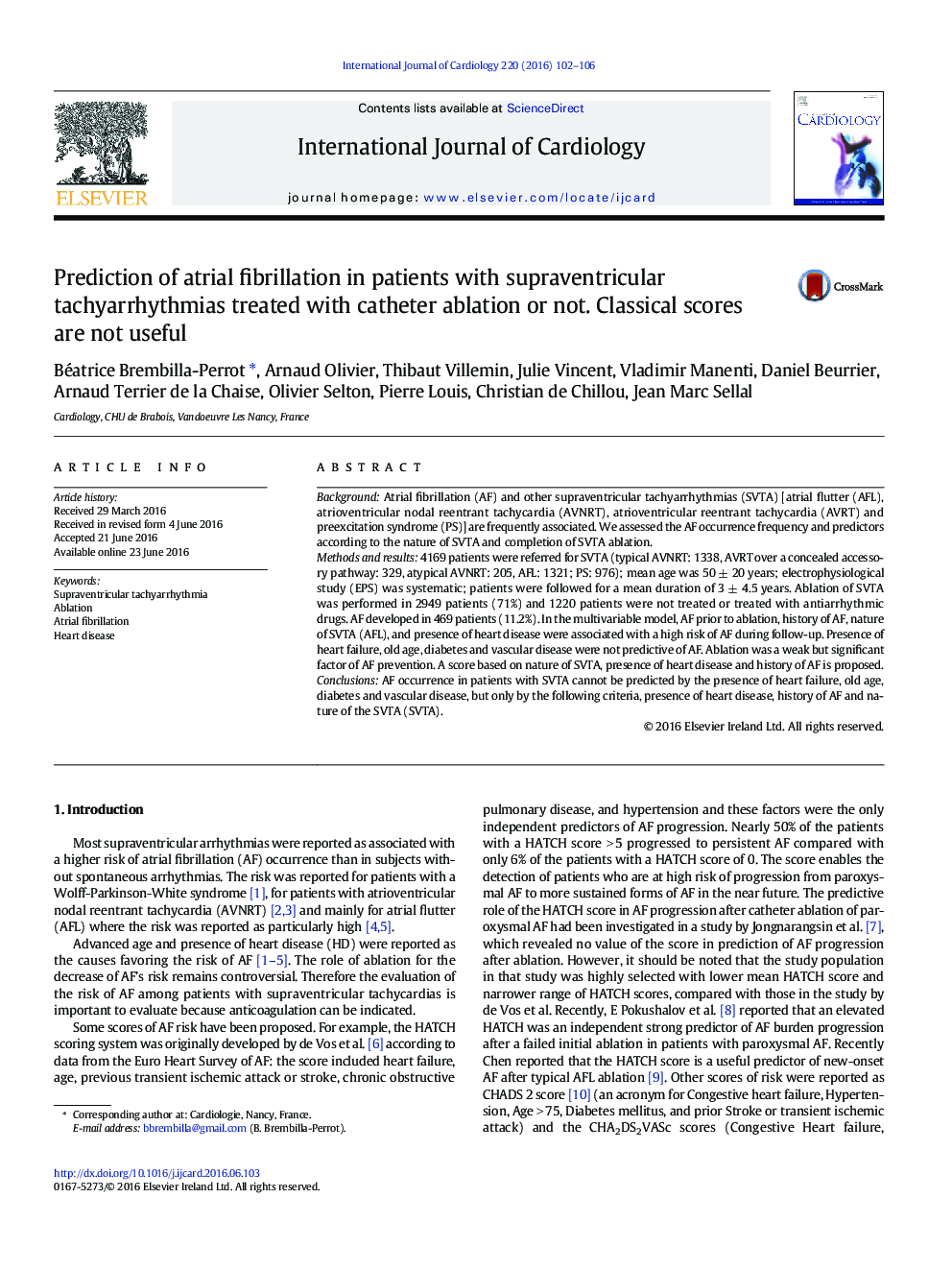| Article ID | Journal | Published Year | Pages | File Type |
|---|---|---|---|---|
| 5963397 | International Journal of Cardiology | 2016 | 5 Pages |
BackgroundAtrial fibrillation (AF) and other supraventricular tachyarrhythmias (SVTA) [atrial flutter (AFL), atrioventricular nodal reentrant tachycardia (AVNRT), atrioventricular reentrant tachycardia (AVRT) and preexcitation syndrome (PS)] are frequently associated. We assessed the AF occurrence frequency and predictors according to the nature of SVTA and completion of SVTA ablation.Methods and results4169 patients were referred for SVTA (typical AVNRT: 1338, AVRT over a concealed accessory pathway: 329, atypical AVNRT: 205, AFL: 1321; PS: 976); mean age was 50 ± 20 years; electrophysiological study (EPS) was systematic; patients were followed for a mean duration of 3 ± 4.5 years. Ablation of SVTA was performed in 2949 patients (71%) and 1220 patients were not treated or treated with antiarrhythmic drugs. AF developed in 469 patients (11.2%). In the multivariable model, AF prior to ablation, history of AF, nature of SVTA (AFL), and presence of heart disease were associated with a high risk of AF during follow-up. Presence of heart failure, old age, diabetes and vascular disease were not predictive of AF. Ablation was a weak but significant factor of AF prevention. A score based on nature of SVTA, presence of heart disease and history of AF is proposed.ConclusionsAF occurrence in patients with SVTA cannot be predicted by the presence of heart failure, old age, diabetes and vascular disease, but only by the following criteria, presence of heart disease, history of AF and nature of the SVTA (SVTA).
Graphical abstractDownload high-res image (106KB)Download full-size image
